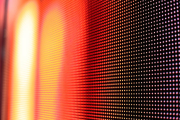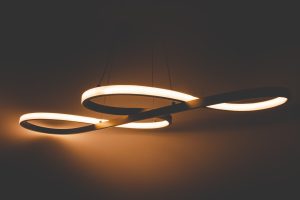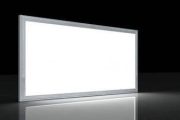The difference between warm white, cool white and pure white
The so-called LED lamps, as the name suggests, refer to lamps that use LED (light emitting diode, light emitting diode) technology as the main light source.
LED is a solid-state semiconductor component, which uses current to circulate forward to the semiconductor pn junction exchange, and then the negatively charged electrons and positively charged holes separated from the semiconductor combine with each other to generate photons Emission, different types of LEDs can emit light of different wavelengths ranging from infrared to blue, and violet to ultraviolet.
the difference is as below:
(1) Different color temperature
Cool White: Cool White is a color temperature above 7000K, Warm White: warm White is s color temperature above 3000K, and, Pure White: is a Daylight White color temperature with 5000K.
(2) Different brightness
The cool white light source is close to natural light and has a bright feeling, which makes people concentrate.
the warm white is similar to the incandescent light, and the red light component is more, giving people a warm, healthy and comfortable feeling. the pure white light source is close to natural light and makes people energy concentrated.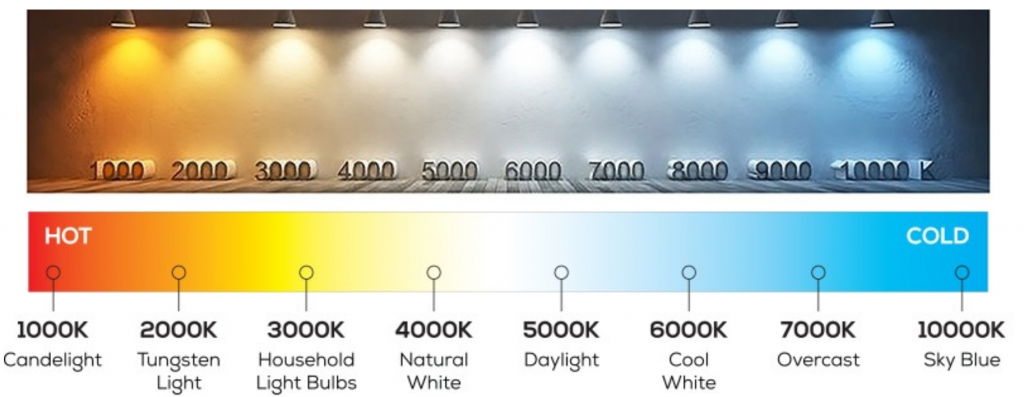
(3) The scope of application is different
Cool white is suitable for offices, meeting rooms, classrooms, drawing rooms, design rooms, library reading rooms, exhibition windows and other places. Warm White is suitable for homes, houses, dormitories, hospitals, hotels and other places, or places with relatively low temperatures. Pure white is suitable for the office.
How to choose the right color temperature of LED lamps
The color temperature of the lamp should be clear. In life, the color temperature of ordinary incandescent lamps is about 2800K, the color temperature of halogen tungsten lamps is 3400K, the color temperature of daylight fluorescent lamps is about 6500K, the color temperature of warm white fluorescent lamps is about 4500K, and the color temperature of high-pressure sodium lamps is about 2000-2100K.
After knowing this, we will have a basis for replacing traditional lamps. Then understand how the color temperature feels in different illumination situations. In low illumination situations, low color temperature light makes people feel happy and comfortable; high color temperature makes people feel gloomy, dim, and cool; high illumination situations, low color temperature Light makes people feel stuffy; high color temperature makes people feel comfortable and happy. The workplace needs a high illuminance and high color temperature environment, and the rest place needs a low illuminance and low color temperature environment.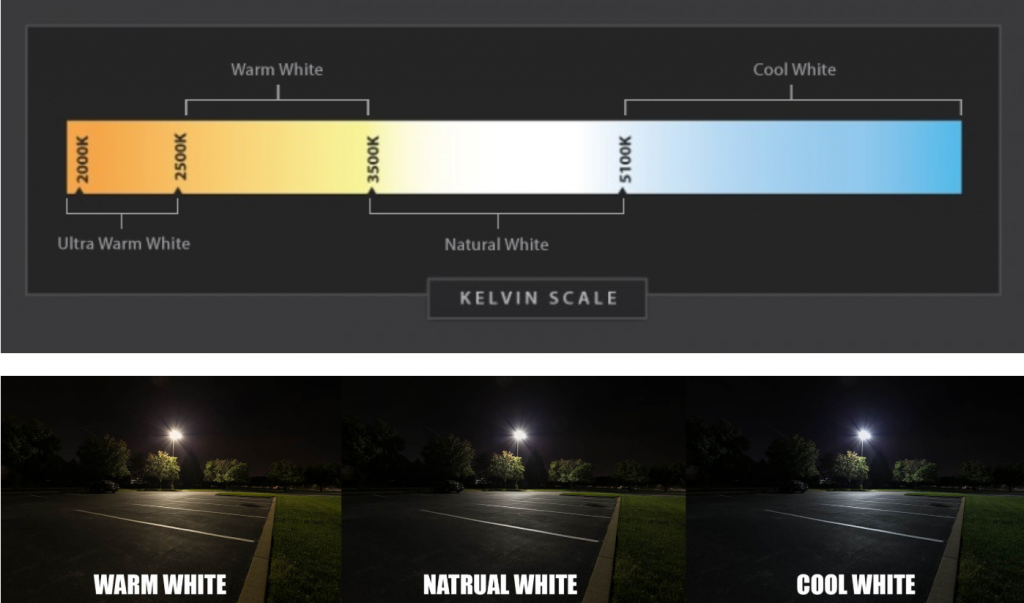
If the lamp you buy is installed in a school, classroom, library, or science laboratory, it is recommended to choose a color temperature of 4500-5000K. Different areas should be equipped with fluorescent lamps with different color temperatures. Most shopping malls use 3500-4500K. This color temperature is natural and lively. It can arouse people’s desire to buy.
The color reflects in the product, which is reassuring and comfortable. feel. If you want to give people a feeling of cleanliness, high-end, and crisp lines, choose a color temperature of 5000-5500K. Offices and meeting rooms are generally based on 5000-5500K. The color temperature of the reception room should be 4000-4500K, which is convenient for guests and hosts to interact and communicate smoothly.
How to choose the color temperature of home lighting LED lamps
★How to choose the color temperature of LED lamps for the bedroom
It is obviously more suitable to use a low color temperature for the bedroom (about 2500~2700K), the light color is orange, warm and comfortable, and it has a relaxing feeling. In theory, the light source with warm color temperature is also considered to be a home light that highlights comfort and warmth, and is the best choice for the bedroom area.
- How to choose the color temperature of LED lamps for the living room
The living room generally uses a low color temperature light source (about 2500~3500K), which helps to highlight the gorgeous and warm atmosphere. It should be noted that for the various types of lights in the living room, the color temperature should be unified to look coordinated. For example, if the LED downlight in the living room uses 3000K color temperature, then LED spotlights, light
strips, wall lights,and track lights should also use 3000K color temperature uniformly. The corridor area connected to the living room is also suitable for using warm and low color temperature.
- How to choose the color temperature of LED lamps for the bathroom
The lamps in the bathroom should choose a neutral color temperature (4000~4500K neutral white light) and a high color rendering index (Ra>90). This color temperature close to the sense of sunlight will make it easier to organize makeup. If a warm color temperature light source is used, chromatic aberration is likely to occur, causing embarrassment. - How to choose the color temperature of LED lamps for the study
The study area is not only a good place for reading and reading, it is even a small place for home work. What is needed is a light source of neutral color temperature (positive white light of 4000~4500K). This kind of mid-to-high color temperature, similar to daylight, is used in places that require attention to detail and where black and white are required. It helps keep your mind sober, concentrate, and improve efficiency. It also helps healthy eyes.
The effect of color temperature on the eyes
Let’s talk about the basics of light sources first. Eye protection is because the high-frequency rectifier circuit makes people not feel the flicker of fluorescence. This is Philips technology in the 1980s, and now all large and small manufacturers can do it. The key to eye protection is the color rendering of the lamp and the color temperature of the lamp.
The eye protection lamp uses a fluorescent tube. The main luminescent materials currently used are 1, pure three-base toner, 2, halogen powder, and 3, a mixed powder of the two. According to the cost calculation, eye protection lamps with a retail price of less than 100 yuan in the market can basically not be called eye protection lights, because eye protection lights that are not pure tri-color are actually eye-catching lights.
The effect of the eye. (The price of pure tri-basic toner is nearly 10 times that of halogen powder) I will not do the analysis here. I will only talk about the color temperature of the pure tri-basic toner tube.
The light of the tri-color tube is the phosphor yttrium oxide (red light, peak wavelength is 611nm), which can emit red, green, and blue light sensitive to the human eye, and magnesium polyaluminate (green light, peak wavelength is 541nm) ) And barium magnesium polyaluminate (blue light, peak wavelength of 450nm) mixed in a certain proportion into three primary color phosphors, which emit light closer to sunlight.
Color temperature is the human eye’s perception of a luminous body or a white reflector. Normally, from 10 noon to 2 pm, on a clear and cloudless sky, in the absence of direct sunlight, standard sunlight is about 5000–5500K. But the light at this time is the most poisonous and dazzling. Current energy-saving lamps generally use a color temperature of 5500-6500K, and eye protection lamps generally use a color temperature of 4500–5500K. Many of our consumers feel eye pain after reading under a desk lamp.
The reason is that the color temperature and color rendering of the desk lamp are not good. Suitable for close reading. It is easy to compare the same book under different color temperature lights. The higher the color temperature, the brighter the light, and the more dazzling the reflected light of the writing. The lower the color temperature, the warmer the yellow light and the softer the reflection of the writing. , The less irritation to the eyes. Through experiments, we can see that the effect of reading a book is the best when the color temperature is around 4000K, and there is basically no reflected glare.
Extended information
The new development in recent years is to coat blue LEDs with phosphor to convert blue LEDs into white LED products. This operation generally requires an LED Driver or Power Supply. The main function of the driver circuit or power supply is to convert AC voltage to DC power and complete the voltage and current that are compatible with the LED. , To drive matched components.
The bulbs of LED lamps are small in size, light in weight, and encapsulated in epoxy resin, which can withstand high-strength mechanical shocks and vibrations, are not easily broken, and have a long brightness decay cycle, so their service life can be as long as 50,000-100,000 hours, far beyond the traditional 1,000 hours for tungsten bulbs and 10,000 hours for fluorescent tubes.
Since the useful life of LED lamps can reach 5 to 10 years, not only can the cost of lamp replacement be greatly reduced, but also because of its characteristics that it can drive light with a very small current, under the same lighting effect, the power consumption is only One-half of the fluorescent tube, so LED also has the advantages of power saving and energy saving.
However, because some of the LED technology is still insufficient, the disadvantages of the initial use of the lamps include poor light quality (color rendering, consistency, color temperature), difficult heat dissipation, and high prices. In addition, improper heat dissipation will cause As a result, the brightness of LED lamps and the service life of circuit components accelerate and decay.




